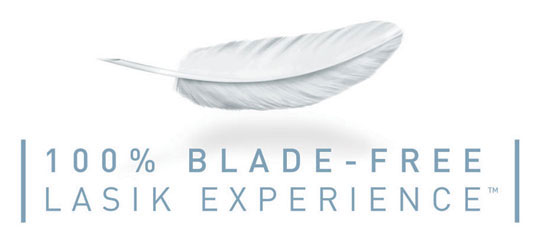
Our Office
Visit Us Online

Congratulations on taking the first step to learn about refractive surgery. We want you to be well-informed and comfortable in choosing Mountain View Eye Center's physicians. We are confident that your quest for the best possible vision will be found at Mountain View Eye Center.
At Mountain View Eye Center, we take your vision seriously. Our skilled surgeons use the most advanced technology to match every patient's eyes and prescription to the correct procedure to optimize your vision results.
Thank you for your trust in us. We look forward to helping you!
Laser-Assisted-In-Situ Keratomileusis (LASIK) is an FDA-approved outpatient procedure that uses the excimer laser to reshape the cornea to treat nearsightedness, farsightedness and astigmatism.
The best way to determine if LASIK is right for you is a one-on-one consultation with a LASIK surgeon. LASIK is appropriate for people who:
The IntraLase femtosecond laser creates the corneal flap during the LASIK procedure. This laser makes it possible to have bladeless LASIK.
The Intralase laser is a silent, computer-guided laser used during the first step of the LASIK procedure to create the corneal flap. In bladeless LASIK, the laser forms a layer of air bubbles which creates a customized flap of uniform thickness.
The benefits of using the IntraLase laser to create the corneal flap include:

Photorefractive Keratectomy (PRK) utilizes the excimer laser to reshape the curvature of the cornea and treats nearsightedness, farsightedness, and astigmatism. PRK differs from LASIK as it is performed on the surface of the eye and no flap is created during the procedure.
PRK is more suitable for people with larger pupils, thinner corneas, dry eyes and those who have other corneal issues. The best way to determine if PRK is right for you is a one-on-one consultation with a PRK surgeon. PRK is appropriate for people who:
Yes. The FDA recognizes LASIK and PRK as proven to be safe and effective. Many safeguards are in place to reduce the risk of error. However, risks are associated with any surgical procedure.
Yes. Most surgeons perform LASIK and PRK on both eyes during the same session.
The actual amount of laser time on each eye averages about 60 seconds. However, the entire procedure takes approximately 15 minutes per eye. Plan to be at the laser center for approximately one hour.
There is little to no discomfort during and after LASIK surgery. Anesthetic eye drops are given at the time of the procedure to ensure your comfort. There may be mild discomfort for the first 24 hours after surgery as the anesthetic eye drops wear off.
There is more discomfort with PRK because the procedure exposes deeper layers of the cornea. As the protective surface cells grow back over the cornea, the discomfort lessens. This process may take up to three weeks. A bandage lens is placed over the cornea after PRK to help decrease the amount of discomfort after the surgery.
You may resume wearing makeup about one week after surgery. However, your surgeon may ask that you throw out your old makeup to decrease risk of infection.
You will take antibiotic and anti-inflammatory eye drops for approximately the first week after surgery. To decrease dryness and increase your best visual outcome, you will use preservative-free artificial tears for the first few months. You may need to use artificial tears up to one full year until your tear film returns to its normal function.
Most patients may return to work or school the day after surgery as your vision permits. However, patients who have PRK may take up to one month to achieve optimal vision. How soon you return to work or school after PRK is dependent on the nature of your occupation and how rapidly your cornea heals.
When you come in for your post-operative appointments, your surgeon will tell you if you meet the legal qualifications to drive.
There is a common misconception that LASIK and PRK will create perfect vision permanently. Although the results are long lasting, there may be changes to your cornea or lens that can change the way you see over time.
Most side effects are considered mild. Many resolve within a short time following surgery or with proper treatment. Possible side effects may include but are not limited to:
Dry Eyes: Eye drops may help stimulate tear production and resolve this problem.
Glare: This may occur as halos or starbursts of light occurring most often at night.
Infection: The rate of post-operative infection is relatively low. Many studies suggest it is less than 1%.
Corneal Abrasion: Some patients may develop a small abrasion following surgery. If this does occur, your surgeon can prescribe eye drops that will provide comfort and promote healing within a few days.
Induced astigmatism: Some patients will experience astigmatism following surgery, even where they did not have this visual problem before. This may result in slight blurred vision, and typically can be managed with a re-treatment or enhancement.
Over-correction or Under-correction: The risk of an over- or under-correction is low. However, if you are over-corrected or under-corrected after surgery, it may be re-treated after stabilization.
Do not wear makeup for one (1) week
No exercise for one (1) week
Use caution when you shower or bathe to avoid getting soap or shampoo in your eyes for two (2) weeks
Do not swim or use a hot tub for two (2) weeks
No snow skiing or snowboarding for two (2) weeks. Wear protective goggles when participating in these activities
Do not bump or rub your eyes for one (1) month although it is best to never rub your eyes
Do not water ski, jet ski, or participate in other sports which may result in hard impact for two (2) months and wear protective goggles when participating in these activities
Use protective eyewear when participating in activities or sports that may result in impact to the eye for three (3) months
Full price LASIK and PRK is $3,950 for both eyes. We offer a discount for those who pay with a credit card or money order: $3,600 for both eyes.
Full payment to Mountain View Eye Center is due before your surgery.
If you choose to take advantage of our 12-month interest-free financing with CareCredit, our office is happy to assist you in your application process.

Layton Location
Ogden Location
Layton Location
Clinic Hours:Ogden Location
Mon - Fri: 9:00 am - 5:00 pm